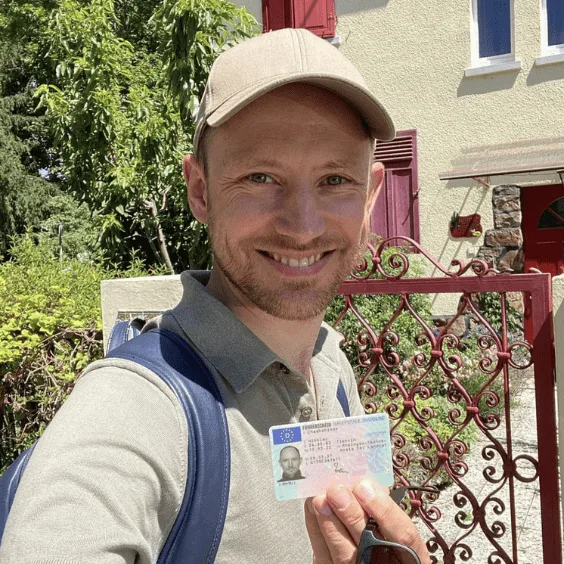Navigating the Process of Obtaining a German Driving License
For individuals living in or planning to move to Germany, obtaining a German driving license is a crucial step towards greater movement and self-reliance. Whether you are a migrant, a student, or a traveler, comprehending the process can save you time, money, and tension. This thorough guide aims to offer a detailed summary of the steps included in acquiring a German driving license, along with some frequently asked questions and useful ideas.
Summary of the German Driving License System
Germany has a well-structured and strenuous system for issuing driving licenses. The procedure can differ depending upon your existing driving status and the kind of license you are looking for. Typically, there are 2 primary classifications of applicants:
- New Drivers: Those who have never ever held a driving license and are applying for the very first time.
- Foreign License Holders: Individuals who already hold a valid driving license from another country and wish to transform it to a German license.
Actions for New Drivers
For new drivers, the procedure of acquiring a German driving license involves a number of stages:
Theoretical Examination (Theorieprüfung)
- Preparation: Attend a driving theory course, which generally consists of 14 lessons. These lessons cover traffic guidelines, roadway indications, and safe driving practices.
- Exam: Pass a multiple-choice exam including 30 questions. You should respond to at least 25 concerns properly to pass.
Practical Training (Fahrausbildung)
- Lessons: Complete a minimum variety of driving lessons, which can vary based upon the kind of license you are making an application for. For a standard car (B category), you typically need at least 12 lessons.
- First Aid Course: Attend a first aid course, which is necessary and usually takes about 8 hours.
Practical Examination (Fahrschulprüfung)
- Exam: Pass a useful driving test, that includes a pre-test inspection, a driving test, and a post-test conversation. Fuehrerscheinn is conducted by a licensed examiner and usually lasts about 30-45 minutes.
Issuance of the License
- Application: Once you have passed both the theoretical and useful tests, you can use for your German driving license. The application is generally processed through the local driving license office (Führerscheinstelle).
Actions for Foreign License Holders
If you currently hold a legitimate driving license from another country, the procedure of getting a German driving license can be more straightforward, depending upon the native land:
EU/EEA and Swiss License Holders
- Exchange: You can exchange your existing license for a German one without taking any additional tests. Nevertheless, you need to apply for the exchange within 6 months of moving to Germany.
- Requirements: Provide your current driving license, a legitimate passport or ID card, and a completed application.
Non-EU/EEA License Holders
- Recognition: Some countries have mutual contracts with Germany, enabling you to exchange your license without additional tests. Check the list of acknowledged countries on the German Federal Ministry of Transport and Digital Infrastructure website.
- Tests: If your nation is not on the list, you may require to take both the theoretical and practical tests. The process resembles that of brand-new drivers, as described above.
Helpful Tips and Considerations
- Language: The theoretical and useful tests are carried out in German. If you are not fluent in German, you might require to take a language course or discover an approved translation service.
- Costs: The expenses for the theory course, useful lessons, and exams can vary. Spending plan approximately EUR500-EUR1000 for the whole process.
- Waiting Times: Be prepared for possible waiting times for both the theory and useful examinations, especially in bigger cities.
- Practice: Regular practice is vital for passing the useful exam. Think about additional practice sessions with a driving trainer or by yourself, if allowed.
Regularly Asked Questions (FAQs)
Q: Can I drive in Germany with a foreign driving license?
- A: Yes, you can drive in Germany with a valid foreign driving license for approximately six months after moving to the country. After that, you will require to get a German driving license.
Q: How long does the whole process take?
- A: The procedure can take numerous months, depending upon your accessibility for courses and tests, in addition to the waiting times at the driving school and the Führerscheinstelle.
Q: Can I take the tests in a language aside from German?
- A: The examinations are conducted in German. Nevertheless, you can utilize an authorized translation service to assist you understand the questions and directions.
Q: What if I fail the exams?
- A: If you fail either the theoretical or practical exam, you can retake it after a particular waiting period, which is normally a few weeks. You may require to attend additional courses or session before retaking the exam.
Q: Are there any age constraints for getting a German driving license?
- A: Yes, you need to be at least 18 years of ages to obtain a standard car driving license (B category). For other categories, such as bikes or trucks, the age requirements might differ.
Getting a German driving license is a substantial step for anyone living in Germany, using greater liberty and access to numerous parts of the country. While the procedure can be extensive, it is developed to ensure that drivers are well-prepared and well-informed about German traffic laws and safe driving practices. By following the steps laid out in this guide and preparing thoroughly, you can successfully browse the procedure and take pleasure in the benefits of driving in Germany.
Whether you are a brand-new driver or a foreign license holder, the key to success is perseverance, preparation, and a commitment to learning. Great luck on your journey to obtaining a German driving license!

